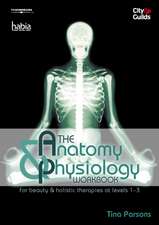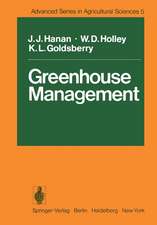LED Lighting for Urban Agriculture
Editat de Toyoki Kozai, Kazuhiro Fujiwara, Erik S. Runkleen Limba Engleză Hardback – 17 noi 2016
LED lighting for urban agriculture in the forthcoming decades will not be just an advancedform of current urban agriculture. It will be largely based on two fields: One is a new paradigm and rapidly advancing concepts, global technologies for LEDs, information and communication technology, renewable energy, and related expertise and their methodologies; the other is basic science and technology that should not change for the next several decades. Consideration should be given now to future urban agriculture based on those two fields.
The tremendous potentials of LED lighting for urban agriculture are stimulating many people in various fields including researchers, businesspeople, policy makers, educators, students, community developers, architects, designers, and entrepreneurs. Readers of this book will understand the principle, concept, design, operation, social roles, pros and cons, costs and benefits of LED lighting for urban agriculture, and its possibilities and challenges for solving local as well as global agricultural, environmental, and social issues.
| Toate formatele și edițiile | Preț | Express |
|---|---|---|
| Paperback (1) | 1200.77 lei 38-45 zile | |
| Springer Nature Singapore – 29 iun 2018 | 1200.77 lei 38-45 zile | |
| Hardback (1) | 1218.66 lei 17-24 zile | +102.68 lei 6-12 zile |
| Springer Nature Singapore – 17 noi 2016 | 1218.66 lei 17-24 zile | +102.68 lei 6-12 zile |
Preț: 1218.66 lei
Preț vechi: 1603.51 lei
-24% Nou
Puncte Express: 1828
Preț estimativ în valută:
233.18€ • 243.47$ • 192.99£
233.18€ • 243.47$ • 192.99£
Carte disponibilă
Livrare economică 10-17 martie
Livrare express 27 februarie-05 martie pentru 112.67 lei
Preluare comenzi: 021 569.72.76
Specificații
ISBN-13: 9789811018466
ISBN-10: 9811018464
Pagini: 400
Ilustrații: X, 454 p. 195 illus., 118 illus. in color.
Dimensiuni: 155 x 235 x 30 mm
Greutate: 0.94 kg
Ediția:1st ed. 2016
Editura: Springer Nature Singapore
Colecția Springer
Locul publicării:Singapore, Singapore
ISBN-10: 9811018464
Pagini: 400
Ilustrații: X, 454 p. 195 illus., 118 illus. in color.
Dimensiuni: 155 x 235 x 30 mm
Greutate: 0.94 kg
Ediția:1st ed. 2016
Editura: Springer Nature Singapore
Colecția Springer
Locul publicării:Singapore, Singapore
Cuprins
Part 1 Perspective and significance of LED lighting for urban agriculture.- 1. Why LED lighting for Urban Agriculture? (T. Kozai).- 2. Integrated Urban Controlled Environment Agricultural Systems (IUCEAS) (KC Ting, T. Ling and Paul C. Davidson, University of Illinois).- 3. Open-Source Agriculture Initiative - Food for the future? – (Caleb Harper, MIT).-Part 2 Plant growth and development as affected by light.- 4. Some aspects of the light environment (T. Kozai and G. Zhang).- 5. Light acts as a signal for regulation of growth and development (Y. Higuchi and T. Hisamatsu).- 6. Factors affecting flowering seasonality (Y. Higuchi and T. Hisamatsu).- 7. Light environment in plant factory with LED lighting (T. Akiyama and T. Kozai).- Part 3 Optical and physiological characteristics of a plant leaf and a canopy (Editor: K. Fujiwara).- 8. Optical and physiological properties of a leaf (K. Murakami and R. Matsuda).- 9. Optical and physiological properties of a plant canopy (Y. Ibaraki).- 10. Evaluation of spatial light environment and plant canopy structure (Y. Ibaraki).- 11. Lighting efficiency in plant production under artificial lighting and plant growth modeling for evaluating the lighting efficiency (Y. Ibaraki).- 12. Effects of physical environment on photosynthesis, respiration, and transpiration (R. Matsuda).- 13. Air current around single leaves and plant canopies and its effect on transpiration, photosynthesis, and plant organ temperatures (Y. Kitaya).- Appendix: Equations used in Part 3.- Part 4 Greenhouse crop production with supplemental LED lighting (Editor: E. Runkle).- 14. Control of Flowering Using Night-interruption and Day-extension LED Lighting (Q. Meng and E. Runkle.- 15. Control of morphology, quality and economic value by manipulating light quality (blue, red, and far-red light) and daily light integral (DLI) using LEDs (R. Lopez and J. Craver)).- 16. Supplemental intra-canopy lighting with LEDs for fruit vegetables (N. Lu, C. Mitchell, E.Heuvelink,and T. Dueck).- Part 5 Light quality effects on plant physiology and morphology (Editor: T. Kozai).- 17. Effect of Light Quality on Secondary Metabolite Production in Leafy Greens and Seedlings (H. Shimizu).- 18. Induction of plant disease resistance and other physiological responses by green light illumination (R. Kudou and K.Yamamoto).- 19. Light quality effects on intumescence (oedema) on leaves (K. Williams, C.T. Miller and J.K. Craver).- Part 6 Current status of commercial plant factories with LED lighting (T. Kozai).- 20.Business models for plant factories using artificial light (PFALs) in Taiwan (Wei Fang, National Taiwan University).- 21. Current status in Asia, Europe and other regions (E. Hayashi).- 22. Current status in Americas, (C Higgins).- 23. Economic analysis and market creation for PFALs (E.Hayashi).- 24. Consumer perception and understanding of vegetables produced at plant factories with artificial lighting (Y. Yano, T. Nakamura and A. Maruyama).- Part 7 Basics of LEDs and LED lighting systems for plant cultivation (Editor: K.Fujiwara).- 25. Radiometric, photometric, and photometric quantities and their units (K. Fujiwara).-26. Basics of LEDs for plant cultivation (K. Fujiwara).- 27. Measurement of photometric and radiometric characteristics of LEDs for plant cultivation (E. Goto)).- 28. Configuration, function and operation of LED lighting systems (A. Yano).- 29. Energy balance and energy conversion process of LEDs and LED lighting systems (A. Yano).- 30. Health effects of occupational exposure to LED light: A special reference to plant cultivation works in plant factories (M. Takao).- 31. Moving toward Self-Learning Closed Plant Production Systems (T. Kozai, and K. Fujiwara).
Notă biografică
Toyoki Kozai, Ph.D., Professor Emeritus, President of Japan Plant Factory Association (NPO), 6-2-1 Kashiwano-ha, Kashiwa, Chiba 277- 0882, Japan
Kazuhiro Fujiwara, Ph.D., Professor, Graduate School of Agricultural and Life Sciences, The University of Tokyo, 1-1-1 Yayoi, Bunkyo-ku, Tokyo 113-8657, Japan
Erik S. Runkle, Ph.D., Professor, Department of Horticulture, Michigan State University, A240-C Plant & Soil Sciences Building, 1066 Bogue Street, East Lansing, MI 48824-1325, USA
Textul de pe ultima copertă
This book focuses on light-emitting diode (LED) lighting, mainly for the commercial production of horticultural crops in plant factories and greenhouses with controlled environments, giving special attention to: 1) plant growth and development as affected by the light environment; and 2) business and technological opportunities and challenges with regard to LEDs. The book contains more than 30 chapters grouped into seven parts: 1) overview of controlled-environment agriculture and its significance; 2) the effects of ambient light on plant growth and development; 3) optical and physiological characteristics of plant leaves and canopies; 4) greenhouse crop production with supplemental LED lighting; 5) effects of light quality on plant physiology and morphology; 6) current status of commercial plant factories under LED lighting; and 7) basics of LEDs and LED lighting for plant cultivation.
LED lighting for urban agriculture in the forthcoming decades will not be just an advancedform of current urban agriculture. It will be largely based on two fields: One is a new paradigm and rapidly advancing concepts, global technologies for LEDs, information and communication technology, renewable energy, and related expertise and their methodologies; the other is basic science and technology that should not change for the next several decades. Consideration should be given now to future urban agriculture based on those two fields.
The tremendous potentials of LED lighting for urban agriculture are stimulating many people in various fields including researchers, businesspeople, policy makers, educators, students, community developers, architects, designers, and entrepreneurs. Readers of this book will understand the principle, concept, design, operation, social roles, pros and cons, costs and benefits of LED lighting for urban agriculture, and its possibilities and challenges for solving local as well as global agricultural, environmental, and social issues.
LED lighting for urban agriculture in the forthcoming decades will not be just an advancedform of current urban agriculture. It will be largely based on two fields: One is a new paradigm and rapidly advancing concepts, global technologies for LEDs, information and communication technology, renewable energy, and related expertise and their methodologies; the other is basic science and technology that should not change for the next several decades. Consideration should be given now to future urban agriculture based on those two fields.
The tremendous potentials of LED lighting for urban agriculture are stimulating many people in various fields including researchers, businesspeople, policy makers, educators, students, community developers, architects, designers, and entrepreneurs. Readers of this book will understand the principle, concept, design, operation, social roles, pros and cons, costs and benefits of LED lighting for urban agriculture, and its possibilities and challenges for solving local as well as global agricultural, environmental, and social issues.
Caracteristici
Is the first book in English on LED lighting for urban agriculture Describes all aspects of LED lighting for urban agriculture including engineering, horticultural science, eco-physiology, business opportunities, and challenges for the future Presents an integrated approach for high yield and quality plant production in a controlled environment using LEDs













